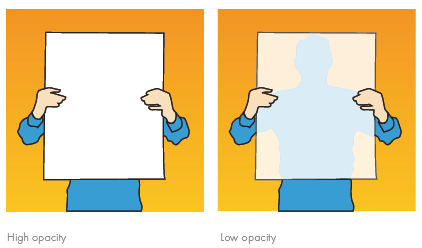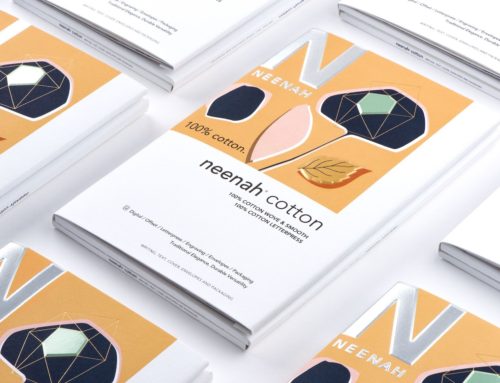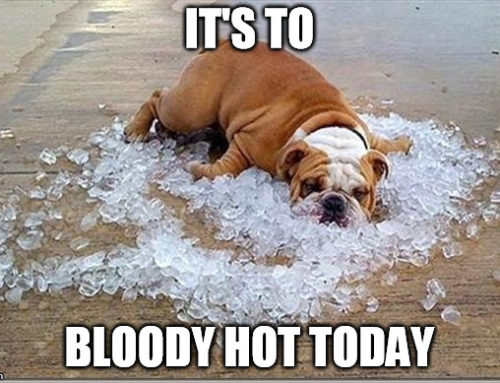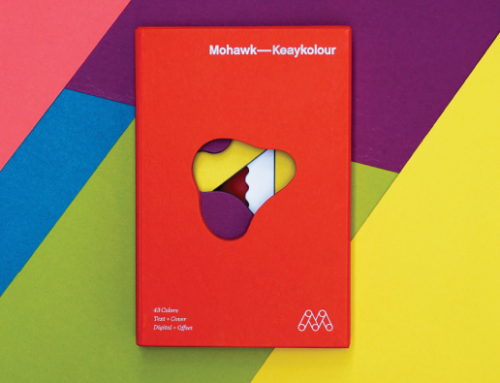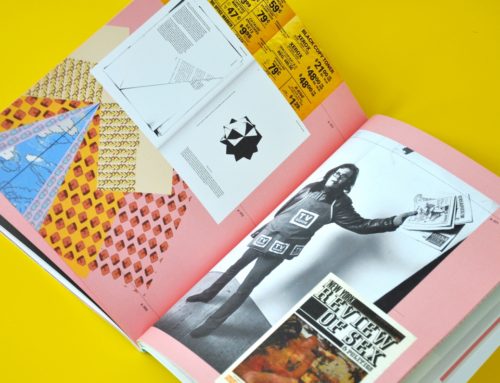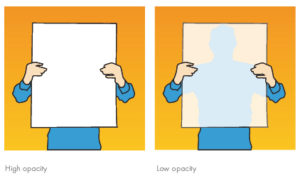

A recent article by Lori Slovik on the Domtarblueline.com looks at the opacity of paper compared to show through.
When selecting a paper stock for your next project, it is important to consider not only the advertised opacity of the paper, but the ability of the sheet to minimize show-through. Although the two are related, they are not the same.
- Opacity, as a technical number, is related to the ability or inability of light to pass through a sheet of paper.
- Show-through is the amount of printed image visible from the opposite side of a printed sheet of paper.
Show-through is undesirable because it can reduce print contrast and interfere with the visual appearance of an image. Minimizing print show-through is a key attribute in the design of opaque papers.
Higher measured opacity can reduce print show-through but may not be a true indicator of a paper’s show-through tendency. For example, when manufacturing paper to a target brightness level, the papermaker might add black dye to reduce the level of brightness they have attained from their pulp and filler. The black dye will reduce the brightness and increase measured opacity but NOT impact show-through.
A higher measured opacity coupled with a tightly formed sheet can improve print show-through. Papermakers will also focus on porosity and optimized distribution of filler particles in the paper to further reduce show-through.
Based on the level of ink coverage your job requires, your printer can guide you in selecting the paper that will provide the optimal results. Remember, not all Opaques are created equal and the opacity numbers alone won’t necessarily predict show-through tendencies.
Read the original post at http://domtarblueline.com/2016/04/paper-opacity-just-number/

